Art World
How New York University Doctor Sharon Madanes Is Using Her Painting Studio to Create Urgent Reminders to Wash Your Hands
"The juxtaposition between life and death and linoleum floor tiles—that fascinates me," she says.
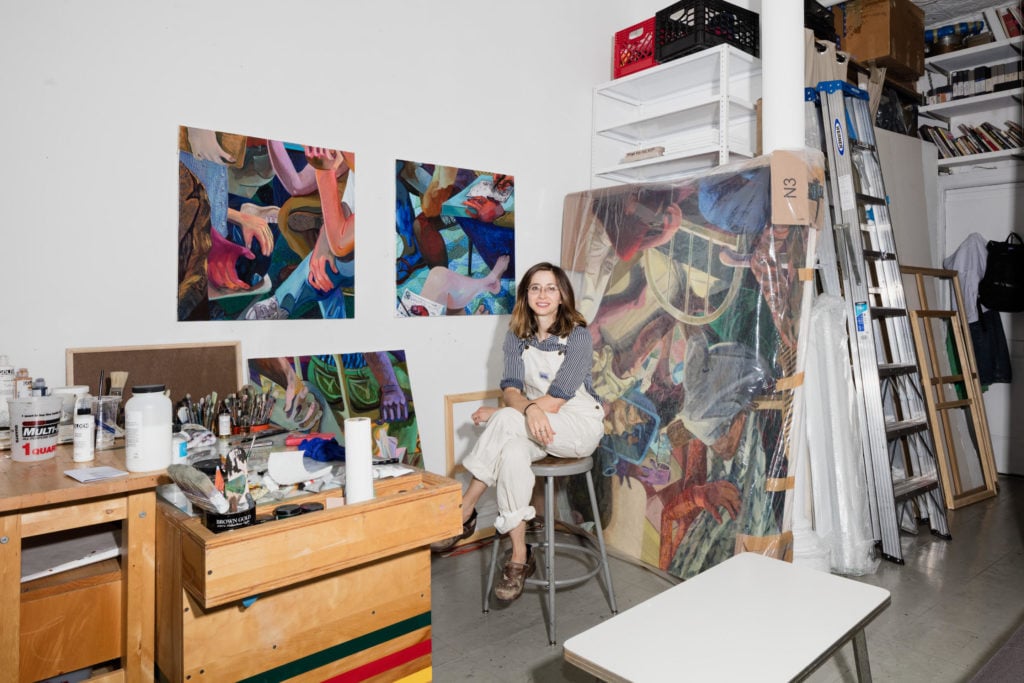
"The juxtaposition between life and death and linoleum floor tiles—that fascinates me," she says.

Katie White

Hand washing is on everyone’s minds lately. From the silent singing of the birthday song (twice over) to the sudden ubiquity of posters illustrating effective scrubbing down (move over Heimlich maneuver), the public has never given more credence to the everyday gesture.
But for the segment of the population that works as doctors and nurses, the art of handwashing is a choreography that’s drilled into their lives dozens of times a day.
Artist and doctor Sharon Madanes transforms that action and the other banalities of hospital life as her subject matter, creating surprisingly beautiful, colorful scenes that juxtapose the administrative side of her work with the corresponding matters of life and death. Madanes, who completed her MFA at Hunter College and attended medical school at Columbia University, is currently a psychiatry resident at New York University.
We recently spoke with Madanes about how her experiences with art and medicine inform one another, the symbolism of handwashing, and how the current news cycle is informing her practice.
Medicine and art are demanding careers to pursue on their own. How did you wind up following both paths?
I grew up in a family of physicians. My father is a physician and my first job was working at his surgical center, sterilizing surgical equipment and helping in the operating room. And growing up in Chicago, I spent a ton of time at the Art Institute and took all their early college programs. From the time I was very young, I remember saying I was going to be an artist and a doctor, and it never really changed.
There were definitely moments where I wasn’t sure—I didn’t know if I would go to medical school I didn’t know if I’d get into art school and, in that case, I’d go to medical school and continue to be a painter in some other way, or vice versa. But I’ve always been very, very committed to my art and I think of that as my primary identity. It percolates through everything that I do.
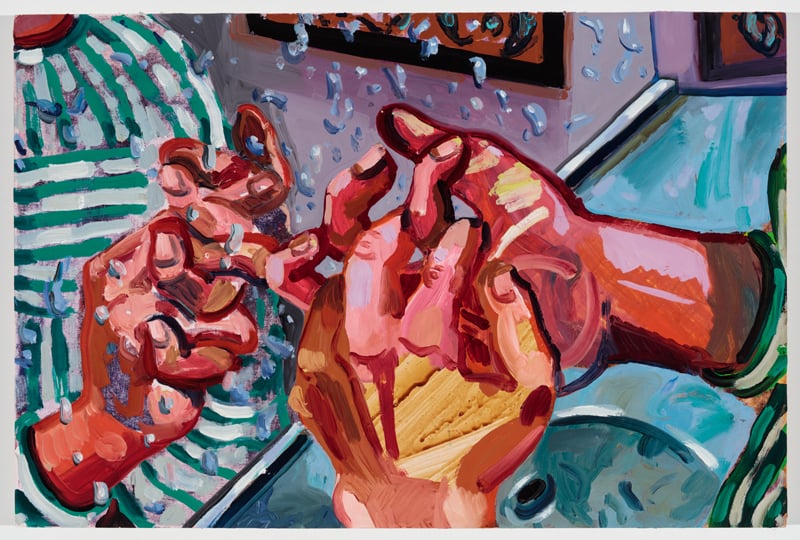
Sharon Madanes, Hand Hygiene (striped shirt) (2016). Courtesy of the artist.
Why do you find the hospital to be interesting subject matter for your paintings?
I’m interested in how the hospital can be a very banal institutional setting with administrative tasks paired with the deepest questions of life and the most morbid things. For instance, as an intern, one of your jobs is to wake up the patient very early in the morning to see how they’re feeling, to do a physical exam, and then report to your superiors.
Then you often visit the patient again as a team and the nurses come in. Then the consultants that you call come in. There is a rotating in and out with absolutely no privacy. What does it mean to be a patient in that environment with people coming in and out, like a train station, but you are lying in bed in the most vulnerable positions?
The juxtaposition between life and death and linoleum floor tiles—that fascinates me.
When did you start making your handwashing paintings and what interested you about that action?
I’m interested in the everyday, but also what the implications of the everyday have to larger societal and philosophical questions. Being in a new medical environment created many opportunities and questions for me.
I began the series of handwashing paintings my first year of medical school and I’m still making them now. The series started as something sort of humorous; handwashing is this insanely repetitive thing that you do in medicine. You go from room to room and you use hand sanitizer and wash your hands about 30 times by the time you’ve finished with an hour and a half of morning rounds. There are these long lines of attending physicians, residents, and medical students just washing their hands or getting some hand sanitizer.
Then I continued to make them because they were so interesting and full of implications. For a doctor, the action forms chapters of time within the day—it structures and breaks up time. And, in another way, it separates the seen from unseen. The gesture symbolically separates self from other—the healthy from the sick, the doctor from the patient.

Sharon Madanes, One Hand on the Other (2016). Courtesy of the artist.
Oftentimes, in your paintings, a set of hands or a limb is presented isolated in unexpected ways. Do you think that your experiences as a physician have changed the ways you portray the body in your artwork?
From a medical viewpoint, the way you look at the body is just a completely different perspective. That perspective itself often is very fragmented. As a doctor you specialize in one part of the body—you become an ear, nose, and throat doctor or a breast surgeon. There are very few specialties that look at the person as a whole, withstanding primary care and internal medicine. And even then, there is a mind-body divide, with medicine on one side and psychiatry on the other.
The medical field is a field where people become fragmented, where they become parts of the body, and it’s challenging to see the whole picture. That it can be a very myopic way of seeing, but at the same time, for a painter, that is the mystery—you pay attention to what’s left out. That’s the part that becomes the most dramatic.
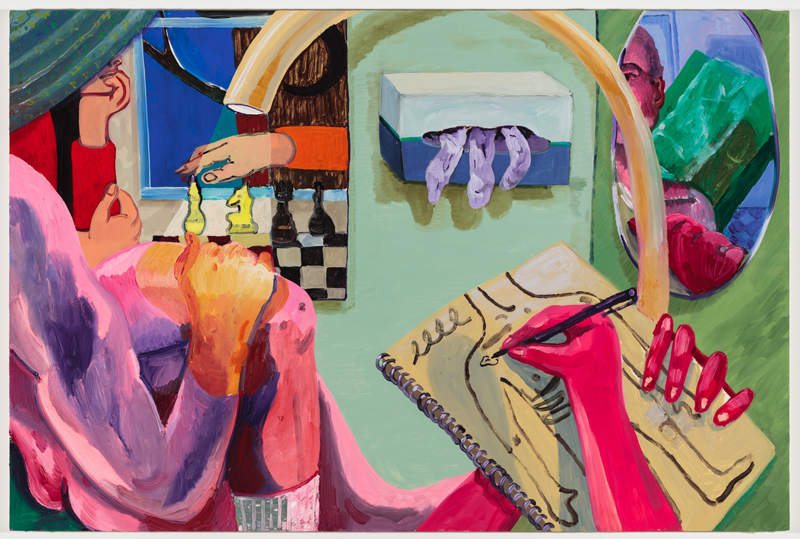
Sharon Madanes, Clinic Chess (2018). Courtesy of the artist.
How would you say that being an artist has informed your approach medicine?
I think that’s one of the reasons I ended up going into psychiatry—thinking about how the humanities can enter into treating a person, through stories and visual thinking as well. For instance, the physical exam is something that’s rooted in observation. And many medical schools have art and art history classes. There is an appreciation of what an arts and humanity training can do. Medicine is a field that’s rooted in humanism—it’s a scientific field, but what makes someone an excellent doctor is both scientific acumen and a warm humanism.
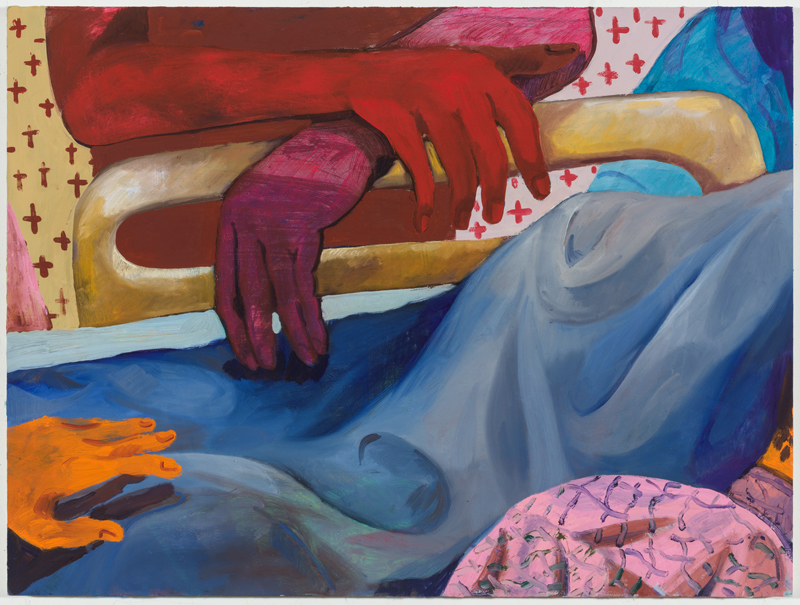
Sharon Madanes, Hover (2018). Courtesy of the artist.
Your use of color is very bold, with a single figure often composed of almost Fauvist color combinations. How do you choose your colors and come to this palette?
I think a lot about the symbolism of colors within the hospital. The color of the scrubs—how and why are those chosen? So you see when your scrubs are dirty with blood because blue or green is the opposite of the colors of flesh? Or—when your scrubs are red, which they are sometimes in the operating room—is that to conceal blood? The pastel tones that are everywhere in the hospital building itself—how are those chosen? I wonder about these aesthetic choices a lot, even the posters that hang in hospital hallways, and what the artwork choices say to the people seeing them even fleetingly. I recently wrote something about a Bonnard poster that I saw in an electroconvulsive therapy suite.
As for my own work, much of my color choice is made intuitively. Later I think about it and understand what I was doing. In my painting Clinical Vision, for instance, there are two kinds of light and color. A group of doctors is crowded around a scan. There is the light of the projection and then the light of the room itself, which interact to cast different shadows. And in that painting, I was thinking about the color of the light as a kind of thinking—of clinical vision—there is the seeing of the thing itself but also how that can reflect backward from the doctors’ minds and into the scan—a light projected both ways.
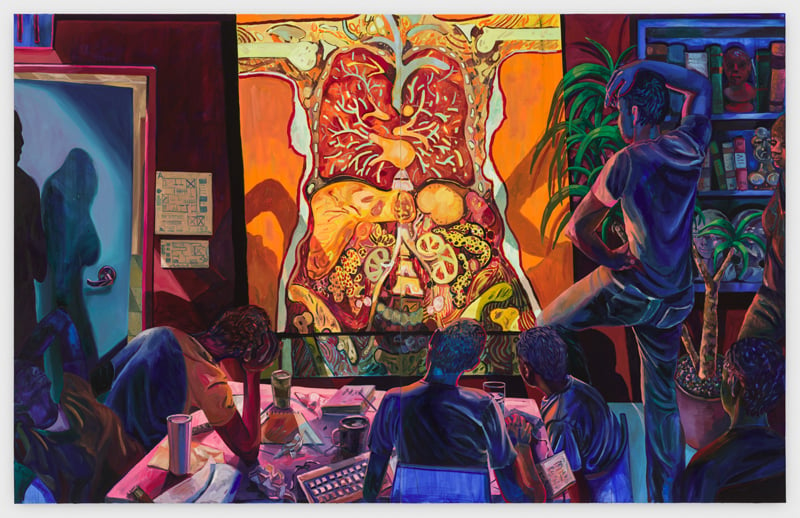
Sharon Madanes, Clinical Vision (2018). Courtesy of the artist.
There is also a certain theatricality to some areas of medicine—to surgery scenes, for instance—that can seem very dramatic.
I spent a lot of time in the operating room during my surgery rotation and it felt like being in an art studio. You prepare everything. You understand how instruments work. You select your fields of the body. That field is cropped out with blue drapes to define that that is the area of interest. And then everybody works together on that one area. If you’re doing plastic surgery, people often step back to think about their work and to talk about what needs to be changed. And so it is very interactive, it feels like being in a sculpture studio or my experience working as an artist assistant.
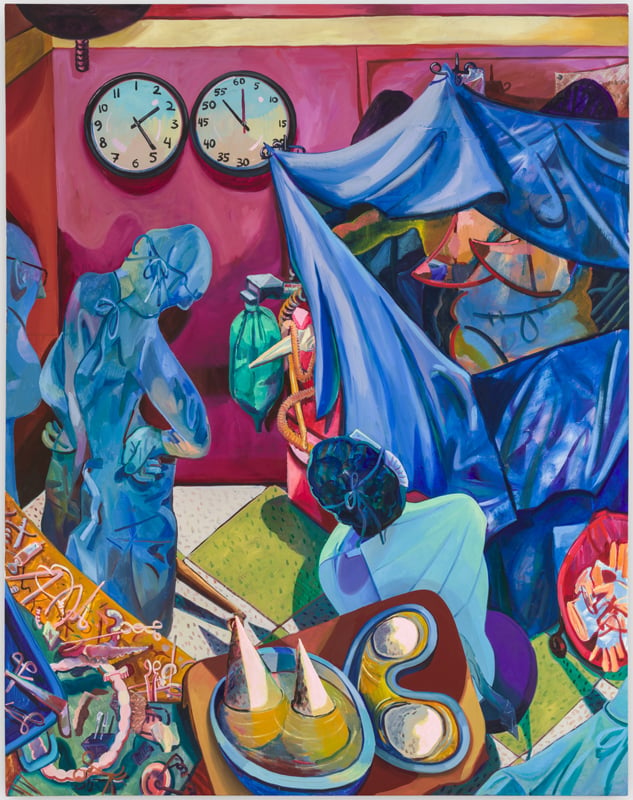
Sharon Madanes, Woman (2019). Courtesy of the artist.
Do you think what’s going on right now in public health is going to affect your work?
It’s affecting my work. Sometimes it takes me a month or two to process what’s happening in the hospital and that gets reflected in my paintings. I’ve already been interested in the alienation of the self versus the other through hand hygiene and in the sense of separating yourself from patients. These mechanisms exist to separate the doctor from a patient: gloves, masks, and physical protective barriers, but they’re also psychological. Even the white coat is one of these symbols. I think symbols of separation are becoming more significant now. But at the same time, those guards are completely eroded. My colleagues are sick and more are getting sick every day.
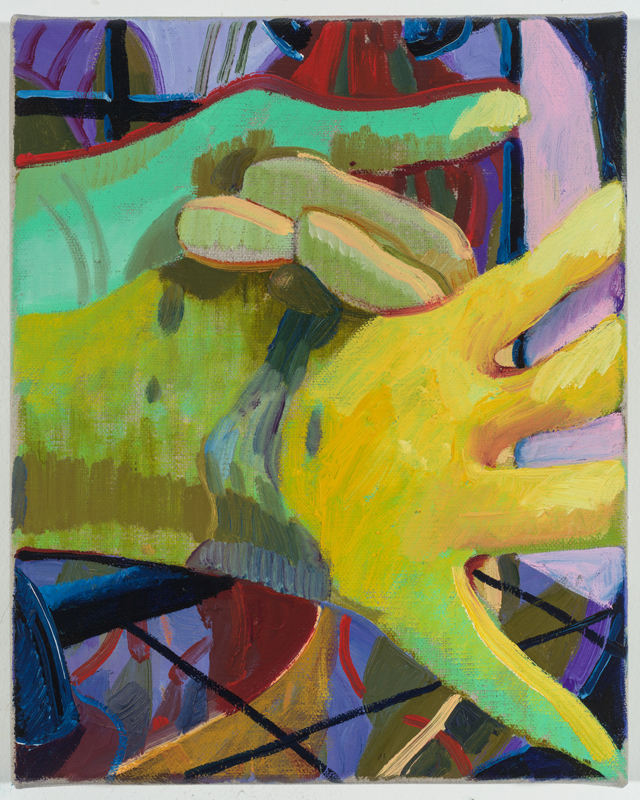
Sharon Madanes, Melting (2019). Courtesy of the artist.
How is the breakdown of those physical and psychological symbols affecting the medical community, do you think?
The stress and anxiety right now are a little bit different than some other stresses you’re usually exposed to in the hospital. There are always risks of being a doctor—needle sticks where you have to take antiretroviral drugs. You can get Hepatitis C. But these risks usually seem very contained to the provider themselves. A lot of physicians are completely selfless, but the situation is different right now because I think people are afraid of coming home. Medical professionals are having to balance their commitment to patients with the safety of their own families and the people that they love at home.